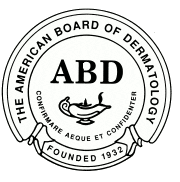Mohs Micrographic Surgery

High cure rate
skin cancer surgery
Our Mohs surgeons are board certified in Micrographic Dermatologic Surgery by the American Board of Dermatology.
Mohs surgery is a specialized treatment for skin cancers developed by Dr. Frederick Mohs, a general surgeon, in the 1930s. It proved to give a high cure rate for difficult skin cancers and was later adopted and refined primarily by dermatologists who treat the majority of skin cancers in modern medicine.
Mohs surgery requires the same physician to act both as surgeon (the removal of tissue) and as pathologist (reading and interpreting the slides to check the lateral and deep margins of excision).
The advantages of Mohs surgery are:
-
A very high cure rate, exceeding 95 percent for primary (previously untreated) skin cancers.
-
Preservation of normal tissue, removal of only the cancer and a small margin of surrounding tissue.
-
Better repairs of the surgical defects by keeping the wounds smaller and being assured of tumor clearance.
The main disadvantage of Mohs surgery is that it is labor intensive, time consuming and therefore more expensive than some other methods of skin cancer treatment.
Mohs surgery is primarily used for the treatment of skin cancers in important functional and cosmetic areas like the face, neck, and hands, It may also be used for large, recurrent or difficult tumors in other areas. In these areas, it is important to be confident of complete tumor removal before undergoing extensive repairs like flaps or grafts.


